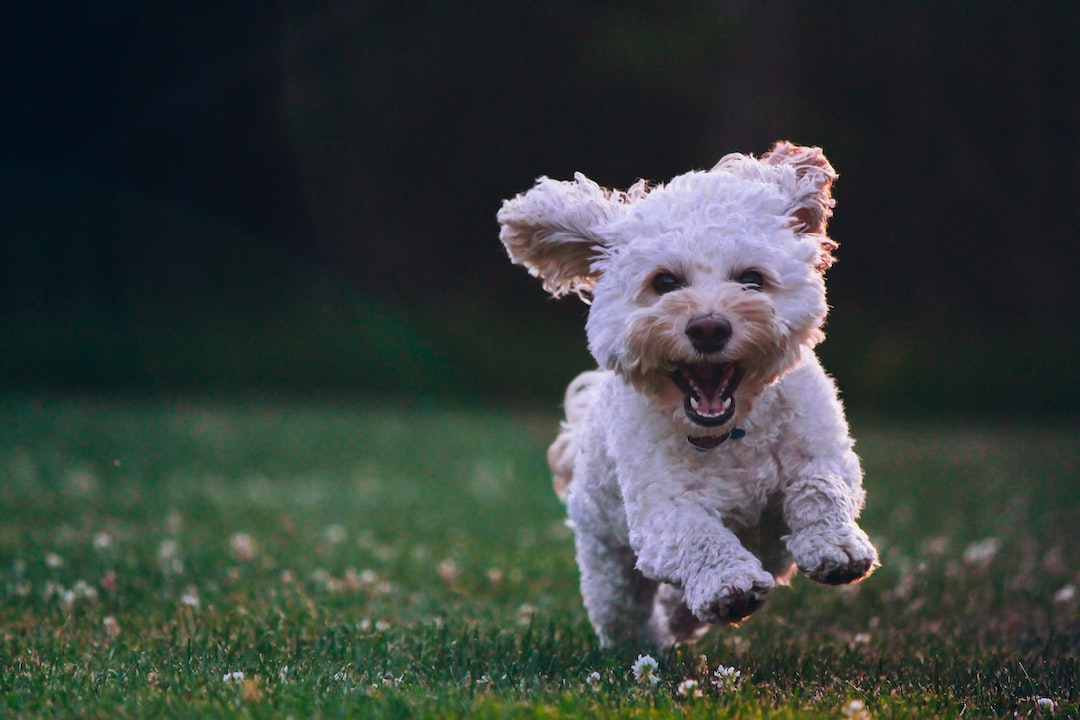Introduction: Why Dog Training Classes are Important in Clearwater
Clearwater, Florida is known for its beautiful beaches, warm weather, and dog-friendly environment. With numerous parks, trails, and outdoor spaces, it’s no wonder that many residents in Clearwater are proud dog owners. However, with the privilege of owning a dog comes the responsibility of ensuring that they are well-behaved in public spaces. This is where dog training classes come in.
Well-behaved dogs are not only a pleasure to be around, but they also contribute to a positive and harmonious community. Dogs that are properly trained and socialized are less likely to exhibit aggressive or disruptive behavior, making them more welcome in public spaces such as parks, cafes, and even on the beach. By enrolling your dog in training classes, you are not only investing in their well-being, but also in the well-being of your community.
Dog training classes offer a wide range of benefits for both dogs and their owners. Not only do they teach dogs basic obedience commands, but they also provide an opportunity for socialization, communication, and problem-solving. Additionally, training classes help to strengthen the bond between you and your dog, while also promoting their health and safety. With all these benefits in mind, it’s clear why dog training classes are important in Clearwater.
Socialization: The Key to a Well-Behaved Dog
Socialization is a crucial aspect of dog training, especially for puppies. It involves exposing your dog to various people, animals, and environments in a positive and controlled manner. By doing so, you are helping them become comfortable and confident in different situations, reducing the likelihood of fear or aggression.
Socialization should begin as early as possible, ideally when your puppy is between 3 and 14 weeks old. During this critical period, puppies are more receptive to new experiences and are more likely to form positive associations. However, socialization is not limited to puppies. Adult dogs can also benefit from socialization, especially if they have had limited exposure to different environments or have had negative experiences in the past.
There are several techniques and exercises that can be used to socialize your dog. These include taking them on walks in different neighborhoods, introducing them to new people and animals, and exposing them to various sounds and sights. It’s important to start slowly and gradually increase the level of difficulty as your dog becomes more comfortable. Positive reinforcement, such as treats and praise, should be used to reward your dog for calm and appropriate behavior during socialization exercises.
The benefits of a well-socialized dog are numerous. They are more likely to be confident and relaxed in new situations, making them less likely to exhibit fear or aggression. Well-socialized dogs are also more likely to get along with other dogs and animals, making trips to the dog park or encounters with other pets more enjoyable. Additionally, socialization helps to prevent behavior problems such as separation anxiety and destructive chewing. Overall, socialization is a key component of a well-behaved and happy dog.
Communication: Learning to Speak Your Dog’s Language
Effective communication is essential for building a strong bond with your dog and for successful training. Dogs communicate primarily through body language, and understanding their signals can help you better understand their needs, emotions, and intentions. By learning to speak your dog’s language, you can improve your communication skills and strengthen your relationship.
Dog body language includes a variety of signals such as facial expressions, body posture, tail position, and vocalizations. For example, a wagging tail can indicate happiness or excitement, while a tucked tail can indicate fear or anxiety. By observing and interpreting these signals, you can better understand how your dog is feeling and respond accordingly.
In addition to understanding your dog’s body language, it’s important to use effective communication techniques when training. Dogs respond best to positive reinforcement, which involves rewarding desired behaviors with treats, praise, or play. This encourages your dog to repeat the behavior in the future. Punishment or harsh training methods should be avoided, as they can lead to fear, aggression, and a breakdown in trust.
Building a strong bond with your dog through communication involves consistency, patience, and understanding. By being clear and consistent in your commands and expectations, your dog will learn what is expected of them. Patience is key, as dogs may not understand or respond to commands immediately. Finally, understanding your dog’s individual needs, preferences, and limitations will help you tailor your training approach to their specific needs.
Basic Obedience: Sit, Stay, and Come when Called
Basic obedience training is an essential part of dog training and is the foundation for more advanced training. It involves teaching your dog basic commands such as sit, stay, and come when called. These commands not only make your dog easier to manage in public spaces, but they also promote safety and prevent behavior problems.
Sit is one of the first commands that dogs should learn. It teaches them to sit down and wait for further instructions. Stay is another important command that teaches dogs to remain in one place until given permission to move. This is particularly useful in situations where you need your dog to stay put, such as when crossing a busy street or when visitors arrive at your home. Come when called is a crucial command that ensures your dog will return to you when called, even in distracting or potentially dangerous situations.
There are various techniques and methods that can be used to teach these commands. Positive reinforcement, such as treats and praise, is an effective way to reward your dog for performing the desired behavior. Consistency and repetition are key, as dogs learn through repetition and consistency. It’s important to start training in a quiet and distraction-free environment, gradually increasing the level of difficulty as your dog becomes more proficient.
The benefits of a well-trained dog are numerous. A dog that responds to basic commands is easier to manage in public spaces, making outings and walks more enjoyable. Basic obedience training also promotes safety, as a dog that comes when called is less likely to run into traffic or get into dangerous situations. Additionally, basic obedience training helps to prevent behavior problems such as jumping, barking, and pulling on the leash. Overall, basic obedience training is an essential part of responsible dog ownership.
Advanced Training: Tricks, Agility, and More
While basic obedience training is important, advanced training can take your dog’s skills to the next level. Advanced training involves teaching your dog more complex commands, tricks, and skills such as agility, scent work, and even therapy dog training. Not only does advanced training provide mental stimulation and physical exercise for your dog, but it also strengthens the bond between you and your furry friend.
One of the benefits of advanced training is that it provides an outlet for your dog’s energy and intelligence. Dogs are naturally curious and enjoy learning new things. By providing them with mental and physical challenges, you can prevent boredom and destructive behavior. Advanced training also helps to build your dog’s confidence and self-esteem, as they learn to overcome obstacles and master new skills.
There are various techniques and exercises that can be used for advanced training. For example, agility training involves teaching your dog to navigate through a course of obstacles such as jumps, tunnels, and weave poles. This not only provides physical exercise, but also improves your dog’s coordination and focus. Scent work involves teaching your dog to use their sense of smell to locate specific scents or objects. This can be a fun and rewarding activity for both you and your dog.
In addition to agility and scent work, there are numerous other advanced training activities that you can explore with your dog. Tricks such as rolling over, playing dead, or giving a high-five can impress your friends and family. Therapy dog training involves teaching your dog to provide comfort and support to people in hospitals, nursing homes, or other settings. This can be a rewarding and fulfilling experience for both you and your dog.
Problem Solving: Addressing Behavioral Issues
Behavioral issues are common in dogs and can range from mild to severe. These issues can include aggression, separation anxiety, excessive barking, and destructive chewing, among others. Addressing these issues is important for the well-being of your dog and for the safety and happiness of your household.
One of the first steps in addressing behavioral issues is to identify the underlying cause. For example, aggression can be caused by fear, anxiety, or a lack of socialization. Separation anxiety can be caused by a fear of being alone or a lack of confidence. By understanding the root cause of the behavior, you can develop a targeted training plan to address it.
Techniques for addressing behavioral issues can vary depending on the specific issue and the individual dog. In some cases, professional help may be required, especially for more severe or complex issues. Positive reinforcement training, behavior modification techniques, and desensitization and counterconditioning exercises can all be effective in addressing behavioral issues.
It’s important to address behavioral issues as soon as they arise, as they can worsen over time if left untreated. Behavioral issues not only impact your dog’s quality of life, but they can also strain your relationship and cause stress within your household. By addressing these issues, you can help your dog become a happier and more well-adjusted member of your family.
Bonding: Strengthening the Relationship Between You and Your Dog
Building a strong bond with your dog is essential for a happy and healthy relationship. A strong bond not only enhances communication and training, but it also provides emotional support and companionship. By investing time and effort into building a strong bond, you can create a lifelong connection with your furry friend.
There are several techniques that can help strengthen the bond between you and your dog. Spending quality time together, such as going for walks, playing games, or simply cuddling on the couch, can help build trust and create positive associations. Training sessions, whether in a formal class or at home, provide an opportunity for you and your dog to work together and learn from each other. Regular exercise and mental stimulation are also important for bonding, as they provide an outlet for your dog’s energy and help to prevent boredom.
Consistency and positive reinforcement are key when building a strong bond. By being consistent in your commands and expectations, your dog will learn to trust and rely on you. Positive reinforcement, such as treats, praise, and play, helps to create positive associations and strengthens the bond between you and your dog. It’s important to be patient and understanding, as building a strong bond takes time and effort.
The benefits of a strong bond between you and your dog are numerous. A strong bond enhances communication and training, making it easier to teach your dog new skills and commands. It also provides emotional support and companionship, as your dog learns to trust and rely on you. Additionally, a strong bond can help prevent behavior problems, as your dog is more likely to listen to and respect your commands. Overall, building a strong bond with your dog is a rewarding and fulfilling experience.
Health and Safety: Teaching Your Dog to Avoid Dangerous Situations
Teaching your dog to avoid dangerous situations is an important part of their training and can help prevent accidents and injuries. Dogs are naturally curious and may be tempted to investigate potentially dangerous objects or environments. By teaching them to avoid these situations, you can keep them safe and healthy.
One technique for teaching your dog to avoid danger is to use a command such as “leave it” or “drop it.” This command teaches your dog to ignore or let go of objects that may be harmful or inappropriate. It’s important to start training in a controlled environment with objects that are safe for your dog to interact with. Gradually increase the level of difficulty by introducing more tempting or potentially dangerous objects.
Another technique for teaching your dog to avoid danger is to use a command such as “stay” or “wait.” This command teaches your dog to remain in one place until given permission to move. This can be useful in situations where your dog may be tempted to run into traffic, approach a potentially aggressive dog, or enter a restricted area.
In addition to training commands, it’s important to provide a safe and secure environment for your dog. This includes keeping toxic substances, sharp objects, and small choking hazards out of reach. It’s also important to supervise your dog when they are outside, especially in unfamiliar or potentially dangerous environments.
The benefits of teaching your dog to avoid dangerous situations are obvious. By preventing accidents and injuries, you are ensuring the health and safety of your furry friend. Additionally, teaching your dog to avoid danger can help prevent behavior problems such as resource guarding or aggression. Overall, teaching your dog to avoid dangerous situations is an important part of responsible dog ownership.
Community: Meeting Other Dog Owners and Building Connections
One of the often-overlooked benefits of dog training classes is the opportunity to meet other dog owners and build connections within your community. Dog training classes provide a social and supportive environment where you can learn from others, share experiences, and build lasting friendships.
Meeting other dog owners can be beneficial for both you and your dog. It provides an opportunity for your dog to socialize and interact with other dogs in a controlled and supervised setting. This can help improve their social skills and reduce the likelihood of fear or aggression towards other dogs. Additionally, meeting other dog owners can provide a support network where you can exchange tips, advice, and resources.
Building connections with other dog owners can also have a positive impact on your own well-being. It provides an opportunity for social interaction and can help combat feelings of loneliness or isolation. Dog owners often share a common bond and can relate to the joys and challenges of owning a dog. By building connections within your community, you can create a support system that can enhance your own well-being and that of your furry friend.
Conclusion: The Lifelong Benefits of Dog Training Classes in Clearwater
In conclusion, dog training classes offer a wide range of benefits for both dogs and their owners. From socialization and communication to basic obedience and advanced training, these classes provide the tools and techniques needed to raise a well-behaved and happy dog. Additionally, dog training classes promote health and safety, strengthen the bond between you and your dog, and provide an opportunity to meet other dog owners and build connections within your community.
While the benefits of dog training classes are clear, it’s important to remember that training is an ongoing process. Just like humans, dogs continue to learn and grow throughout their lives. By enrolling in dog training classes in Clearwater, you are investing in your dog’s well-being and ensuring that they have the skills and knowledge needed to navigate the world around them.
So, whether you have a new puppy or an adult dog, consider enrolling in dog training classes in Clearwater. Not only will you be able to teach your dog basic obedience commands, but you will also learn valuable techniques for managing behavior problems and building a strong bond with your furry friend. Dog training classes provide a structured environment where you can practice training exercises and receive guidance from experienced trainers. Additionally, these classes offer an opportunity for socialization, allowing your dog to interact with other dogs in a controlled setting. By enrolling in dog training classes, you are investing in your dog’s well-being and ensuring that they become a well-behaved and happy member of your family.
If you’re interested in dog training classes in Clearwater, you might also want to check out this insightful article on pet-friendly destinations in the Tampa Bay region. It provides great information on places where you can take your furry friend for a fun day out. From parks to beaches and even cafes, this article has got you covered. So, while you’re working on training your dog, why not plan some exciting adventures together? Click here to read more about it.




